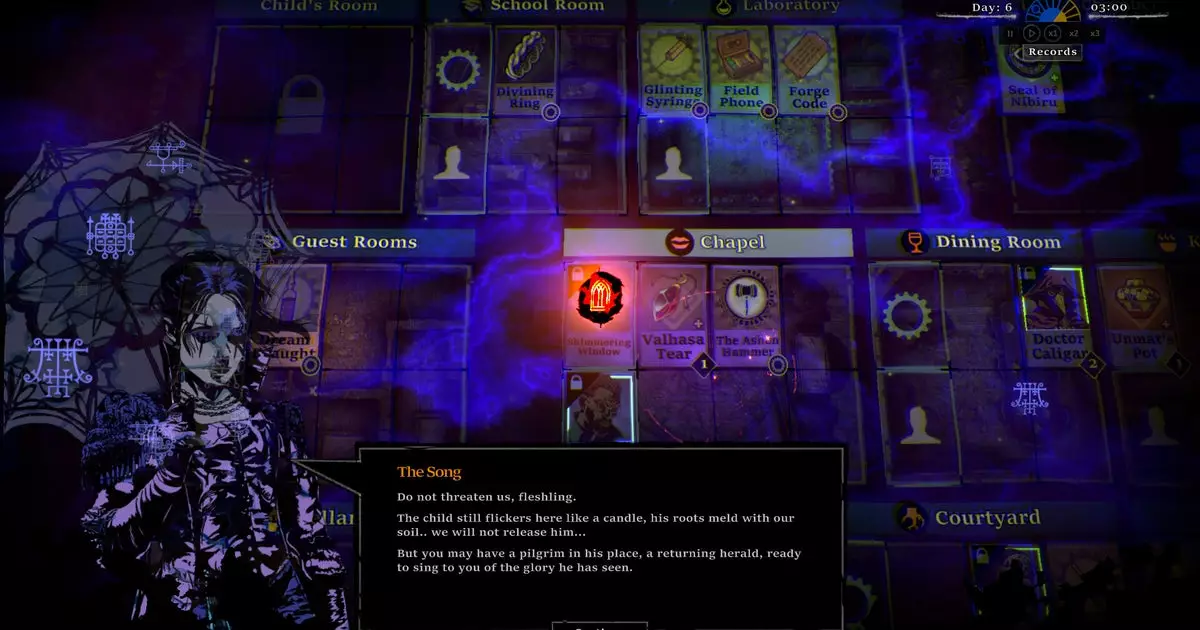In the dimly lit corridors of gaming landscapes, few experiences resonate as powerfully as the atmospheric depth found in “The Horror At Highrook.” The demo beguiles players not just through its gameplay mechanics, but through its closely knitted tapestry of visuals and environment. The graphics transition seamlessly from the pale grays of day to the rich crimson of sunset and finally to the ethereal glow of lunar twilight, creating an immersive setting that commands attention. Each hue whispers secrets of the past, drawing players into the haunted estate with the promise of untold mysteries.
Yet, as captivating as the setting may be, it serves a dual purpose that extends beyond mere aesthetics. Gamers must remain vigilant; idleness leads to dire consequences, where characters can succumb to fatigue or hunger, evidenced by diminishing health bars or fragile sanity levels. This design choice compels players to continually engage with their surroundings. Characters must be deployed wisely as they scrounge for resources and unravel secrets, rendering the atmosphere as not just a scenic backdrop, but an integral part of the gameplay experience.
At its core, “The Horror At Highrook” crafts an intricate interface guided by strategic maneuvering of cards that embody essential resources and tasks. Players tactically assign their characters to diverse rooms, utilizing items to tackle missions that range from piecing together cryptic texts to scouting the ominous cliffs beneath the mansion. The synergy between the characters’ stats and the missions expands the complexity of the game, creating a feedback loop of resource management and character development.
Yet, the added layer of ‘vision’ cards and special abilities create a multi-dimensional experience, blending elements of RPG lending credence to characters with their unique quirks, much like a narrative spun by gothic authors like Edgar Allan Poe or H.P. Lovecraft. For instance, power-ups like the “Gift of the Bee” deepen character interaction, infusing the mundane aspects of gameplay—such as a plague doctor’s lab work—with poetic descriptions that enrich the player’s connection to their character. Each decision feeds into this narrative fabric, creating an engaging system that rewards exploration and creativity.
As much as “The Horror At Highrook” stands alone, its connections to previous titles like “Darkest Dungeon” and “Cultist Simulator” paint a deeper emotional landscape. Not only do they share thematic elements, but they echo sentiments of dread and unease that sidle up to a sense of curiosity about the past. However, it’s interesting to note the cognitive dissonance that can arise when reflecting on “Cultist Simulator,” especially given the controversies surrounding its creator. Players must navigate their own memories and associations while engaging with new narratives in “The Horror At Highrook,” leading to a uniquely layered reflection that transcends simplistic comparisons.
While the opulence of the writing in “The Horror At Highrook” evokes a literary resonance, it also poses challenges in an already complex gameplay environment. Engrossing prose may, at times, overwhelm players who are busy managing multiple character needs in a brisk environment, prompting moments where the pause button becomes both a friend and a foe. Balancing rich storytelling with streamlined gameplay can be a precarious endeavor.
Even after playing for a brief thirty minutes, it’s clear that “The Horror At Highrook” has much more to unveil, with myriad layers of narrative and design waiting to be peeled away. Characters like Atticus Hawk spark intrigue but also characters with accents that are difficult to place, echo the game’s overarching theme of uncertainty and obscurity. It speaks to the essence of the game—a blend of chilling atmosphere and engaging mechanics housed within an unsettling narrative context.
“The Horror At Highrook” arrives as a compelling misfit in the gaming scene, a mystery draped in enchanting visuals and haunting stories that beckons players to dive deeper. The forthcoming evolution of gameplay strategies, character development, and narrative depth promises a rich and rewarding experience, even as shadows linger from its thematic siblings. For those intrigued by the duality of horror and beauty, navigating the intricacies of this game may just uncover secrets that resound long after the final curtain falls.

